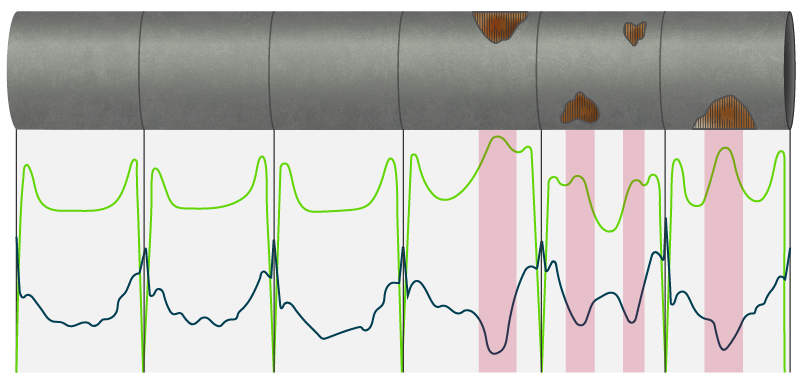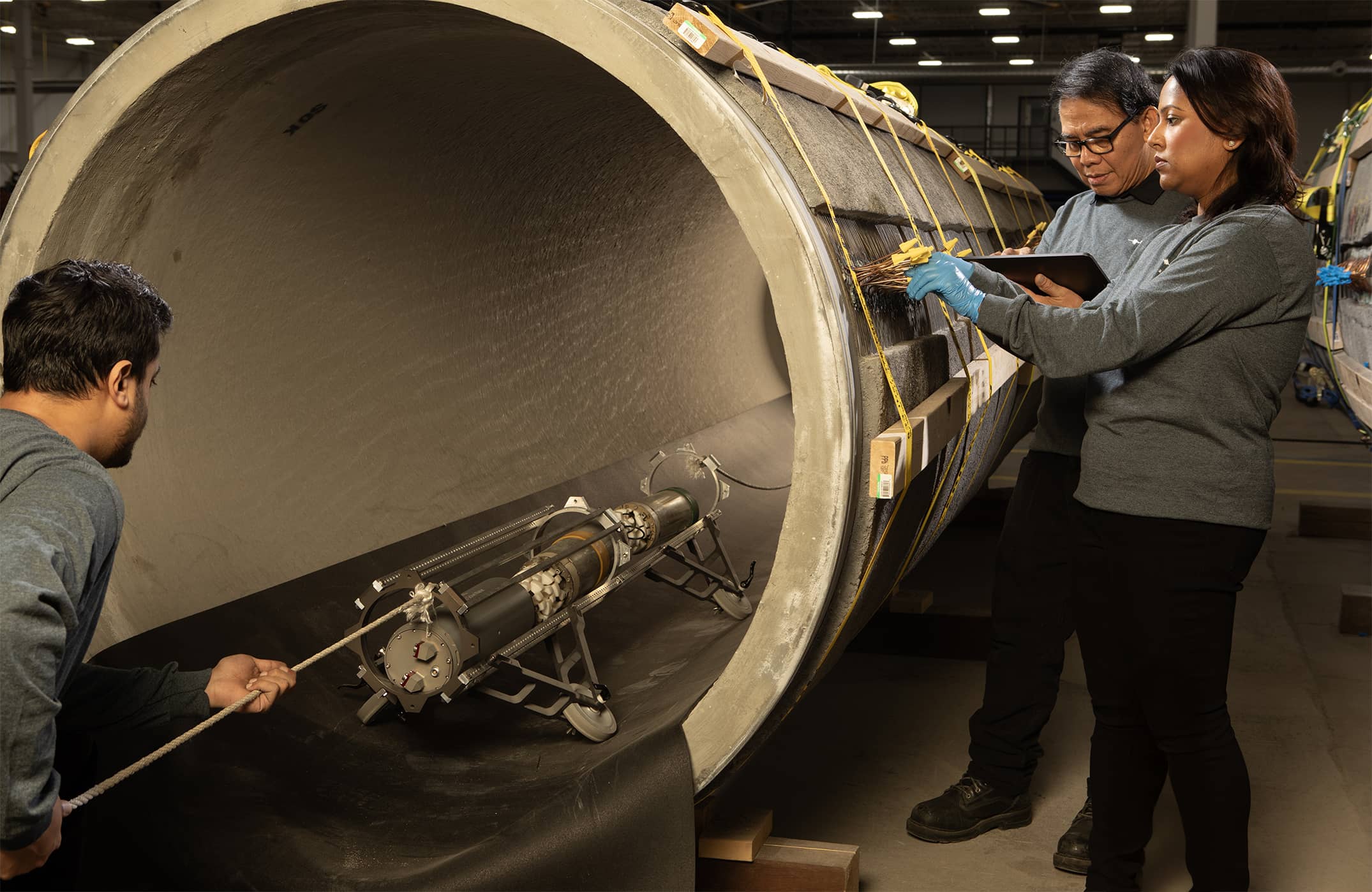Ask the expert: understanding the role of calibration in PCCP inspections
The first electromagnetic (EM) inspections of prestressed concrete cylinder pipe (PCCP) took place in the late 1990s. Since then, EM inspections have revolutionized the way utilities manage PCCP by enabling detection of broken wire wraps, a critical indicator of deterioration. Behind successful inspections lies a crucial process — calibration. This blog pulls back the curtain on calibration, revealing how it ensures precise quantification of wire breaks and leads to more reliable inspection results.
Why is calibration critical?
EM inspection tools induce an electric current in PCCP prestressing wires and detect discontinuities in the current caused by broken wire wraps. These discontinuities appear as telltale shifts in the baseline EM signal during analysis.

Analysts identify broken wire wraps based on shifts in the electromagnetic signal.
While a signal shift can be obvious, accurately quantifying the number of broken wire wraps is far more complex. What’s more challenging is that pipe material and properties, such as cylinder thickness and wire spacing, greatly influence how the signal behaves. This is where calibration comes in. Calibration adjusts the analysis to account for signal behaviors in the pipeline under inspection.
Calibration is a valuable and important tool for more accurate quantification of broken wire wraps.
How is calibration conducted?
Calibration begins by establishing a baseline in a pipe with no broken wire wraps. We scan a reference pipe, or set of pipes, that share the same properties as the pipeline being inspected. The baseline scan shows the signal variation due to pipe properties alone. Then, we perform additional scans while varying the number and layout of broken wire wraps.

Calibration is a controlled test that measures the electromagnetic signal response as we vary the number and layout of broken wire wraps.
However, removing pipes from the ground for destructive testing is not always practical. At Xylem, we can use our extensive library of results from past calibrations. These records can save utilities time and money without compromising reliable results.
Additionally, we can perform calibration if pipes become available in the future and apply new calibration curves to the analysis. We are also exploring ways to harness AI and our large inspection dataset to streamline the calibration process moving forward.
Xylem analysts can support custom calibrations or identify existing calibration curves from our extensive library.
When repairing or replacing a pipe, validation is an important part of the feedback loop. Validation provides an opportunity to confirm that inspection findings align with field observations and further refine the calibration. This improves the speed and accuracy of data analysis during reinspection and helps other utilities with similar pipelines.
Why does accuracy matter?
Structural analyses rely on accurate wire break data to evaluate pipe integrity and inform risk mitigation strategies. Underestimating deterioration risks catastrophic failure, while overestimating can lead to unnecessary repairs or replacements. Accurately determining the number and location of wire breaks empowers utilities to optimize their maintenance plans and more cost-effectively manage their assets.
Wrap up
By accounting for pipe-specific properties, calibration improves the precision of wire break quantification and enhances confidence in inspection results. This accuracy plays a crucial role in supporting structural evaluations and guiding management decisions. With 25 years of PCCP inspection experience and data, Xylem can ensure accurate and reliable analysis. Reach out to our experts to learn more today.


